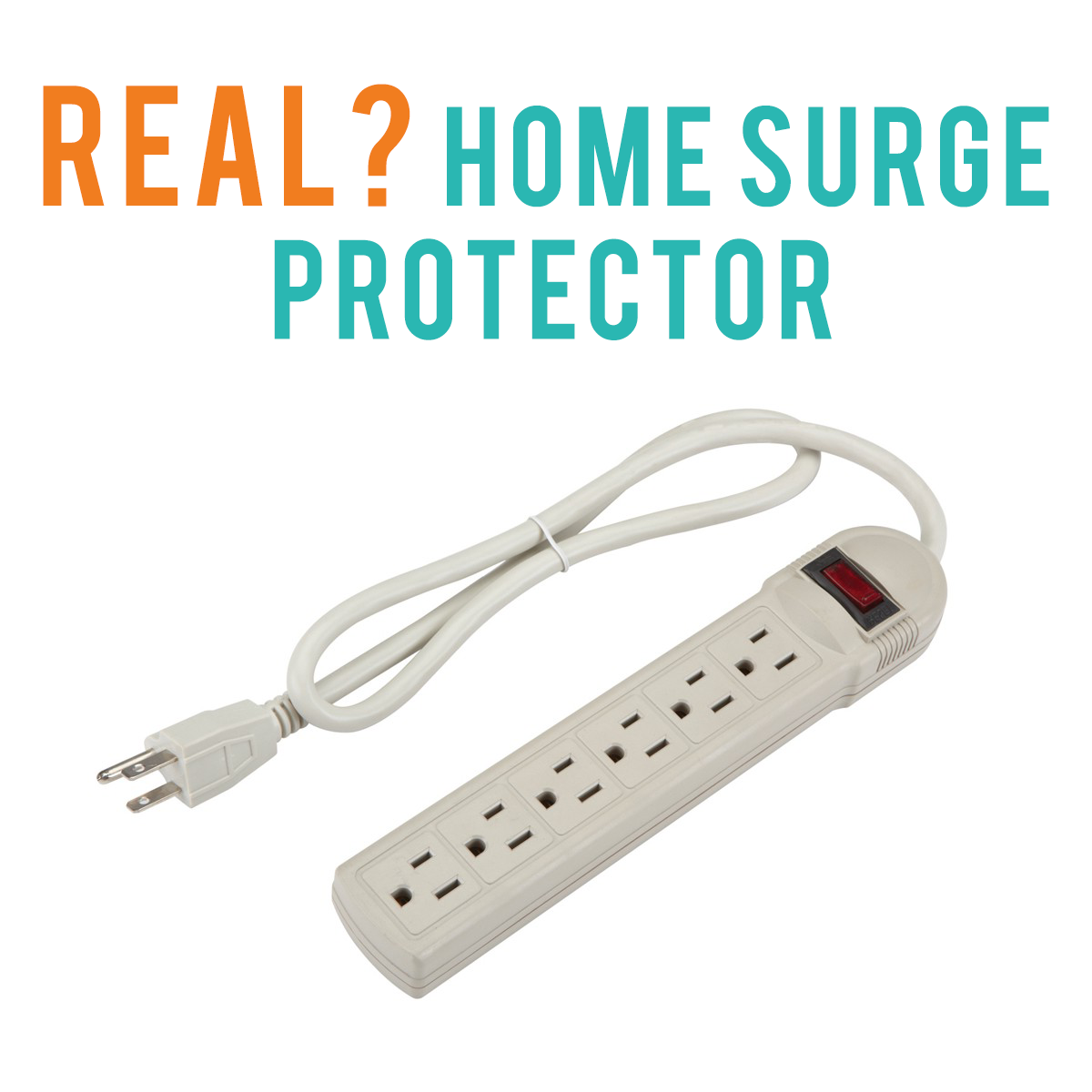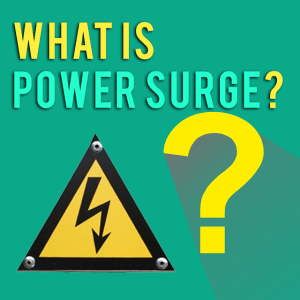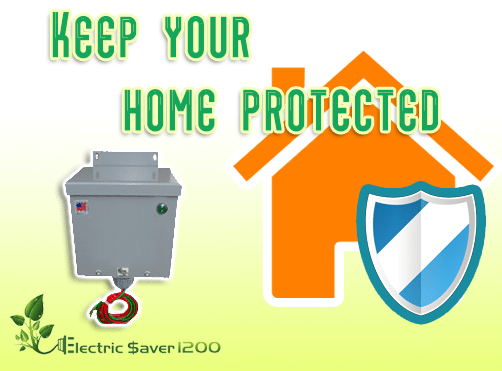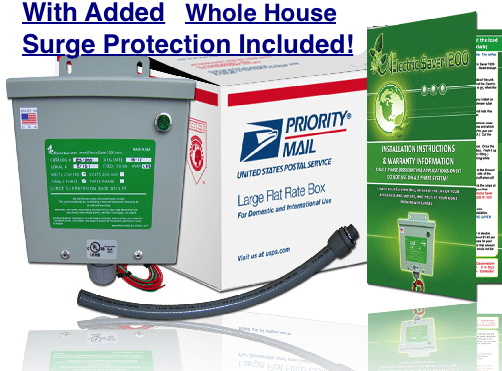Not Knowing this about Surge Protectors COULD be a HUGE Mistake!
 When people think about a home surge protector, they usually think about the little 6-outlet strip that they plug their computer into. This is only a small part of the picture and it can be a big mistake to only have this understanding of surge protection.
When people think about a home surge protector, they usually think about the little 6-outlet strip that they plug their computer into. This is only a small part of the picture and it can be a big mistake to only have this understanding of surge protection.
In today’s world, we are becoming ever more dependent on technology. We use it for work, for entertainment, for communication and just about everything else in between. It has become such an integral part of our lives that much of our time and money revolves around it. So why is it that we don’t properly ensure that our devices are protected from the elements?
“But I use a surge protector!” you say? Not to be mean, but what you’re referring to isn’t a REAL home surge protector. How is that? Well, to fully and completely explain that, we’re going to need to get a little bit more information as to what a power surge is.
 What is a power surge & Why do I need a Home Surge Protector?
What is a power surge & Why do I need a Home Surge Protector?
The Collins dictionary defines a power surge as: an unexpected, temporary increase in the current or voltage of an electrical circuit. Now there are actually several causes of power surges:
- Power surges caused by home appliances turning on and off (happens many times a day)
- Those caused by trees coming into contact with power lines
- Those caused by problems with your power company’s transformers
- Power surges resulting from lightning strikes
Not all of them are cause for much concern, and really only the last 2 could cause instant and obvious damage to your home electronics and appliances. But there is a factor that most people aren’t aware of, and that is that in many type of home electronic devices, you’ll find microprocessors that are sensitive to even the smallest of power fluctuations.
This means that even the regular, run-of-the-mill, small surges can eventually cause damage to those components. Now you’ll usually find those types of processors in devices like computers, and as most of us plug computers into a surge protector (which is perfectly capable of handling the smaller surges) this really isn’t an issue. But as more and more devices become “smart” (like TV sets, disc players and others), these types of sensitive parts will be found in more places.
 Why more Home Surge & Brownout Protection is Needed.
Why more Home Surge & Brownout Protection is Needed.
OK, so those little power strips will keep your appliances safe from the most common of surges. But what about the other types of surges? Are they even worth worrying about? I mean, how often does lightning damage electronic equipment?
Although it’s a little bit hard to estimate, there are over 20 million ground lightning strikes per year just in the continental US. This leaves a fair chance that one day, your home may be affected by one. And if that should happen, a typical 6-outlet power strip with built in surge protection won’t do a thing to protect your devices from the incoming surge. There would simply be too much power for it to handle. The reason for this is that these types of surge protectors work by reducing the amount of electricity that passes through them when it goes above a certain threshold. But that electricity has to go somewhere, and so the surge protector “eats is” so to speak. With each one only having a limited ability to clamp down surges, they have a lifespan.
For example, if yours is rated for 1,000 joules, then it will protect your appliances against a single surge of 1,000 joules, or 2 surges of 500 joules, or 10 surges of 100 joules, etc. Once those 1,000 joules run out, then it’s toast.
In the case of a lightning strike, more joules of power will be sent down the lines than the protector can handle, and so it will pass right into your appliances.
The answer. Our Complete Home Surge Protection Equipment.
 So what’s the solution? Buy whole house surge protection.
So what’s the solution? Buy whole house surge protection.
This isn’t something that you plug into a wall. It’s a more robust type of device that needs to be installed at the breaker panel. It is designed to handle power surges originating from both inside the house and from outside. A whole house surge protector doesn’t require any special permit or consent from your power company to install (as some do) and can actually handle the massive surge from lightning strikes. Plus this one is installed in less than 20 minutes. Your local handyman/electrician can get the job done easily and even some handy homeowners have installed this with no problems. (It does come with instructions and wiring diagram) This little baby works over & over, by it’s design it never runs out!
They work differently than run-of-the-mill surge protectors in that they will limit the current that passes through them. And in the case of an extreme overload, they will self-sacrifice to completely stop the current from damaging your home’s appliances. Also keep in mind that it’s still a good idea to leave your appliances plugged into their typical surge protector as you can never have too much protection.
 There are lots of different types of these protectors available, but only one has the added benefit of also saving the user money on their electric bill. The Electric Saver 1200 plus Whole House Surge Protector works to not only keep your home protected against harmful power surges, but it will also recycle the power that many of your appliances waste thus providing better electrical efficiency. And it’s on sale now for what you would pay for just a regular surge protector!
There are lots of different types of these protectors available, but only one has the added benefit of also saving the user money on their electric bill. The Electric Saver 1200 plus Whole House Surge Protector works to not only keep your home protected against harmful power surges, but it will also recycle the power that many of your appliances waste thus providing better electrical efficiency. And it’s on sale now for what you would pay for just a regular surge protector!
Regardless of which type you decide on, realize that failure to get one installed has the potential of leaving your appliances in harm’s way. It’s way less expensive to get a surge protector installed in your home than to replace thousands of dollars of electronics and appliances.
In summary, there are various causes for power surges, some minor and some major. You need more than just a simple plug-in surge protector to really guarantee the safety of your appliances and devices. Using that coupled with one designed for whole home protection is really the best way to go.


